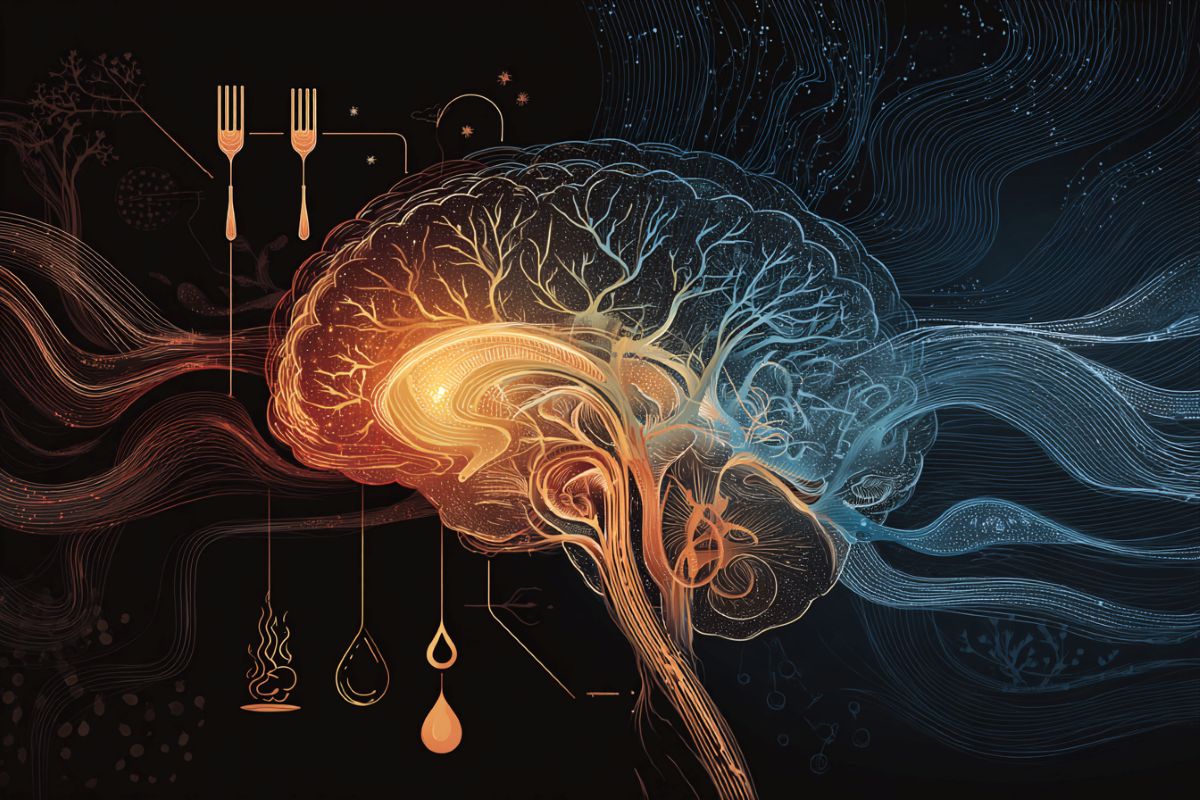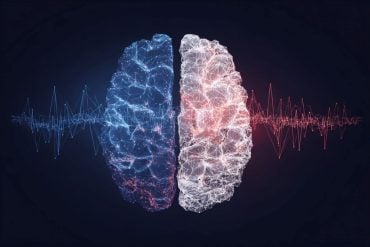Summary: Chronic pain affects nearly 50 million Americans, yet new research reveals the brain may have an internal switch that can turn it down. Scientists identified a group of neurons in the brainstem that regulate long-term pain by integrating signals related to hunger, fear, and thirst.
When survival needs take priority, these neurons dampen pain through neuropeptide Y signaling, suggesting a built-in “override” system. The discovery opens new possibilities for brain-based pain treatments that could be targeted through drugs or behavioral interventions.
Key Facts:
- Pain Override Circuit: Y1 receptor neurons in the brainstem reduce chronic pain when hunger or fear takes precedence.
- Neuropeptide Y Role: Acts as a messenger to silence pain signals during competing survival needs.
- Therapeutic Potential: Could inspire biomarkers and treatments targeting brain circuits instead of local injuries.
Original Research: University of Pennsylvania
Acute or short-lived pain, despite its bad reputation, is usually a lifesaver. It acts as a transient negative sensory experience that helps us avoid danger.
Touch a hot stove, stub a toe, or bonk your head on a low branch, and the nervous system cues up an “Ow!” Over time, the sting fades, the wound heals, but the lesson sticks.
Chronic pain is different; the alarm keeps blaring long after the fire is out, and then the pain itself becomes the problem. Nearly 50 million people in the United States live with chronic pain, an invisible and often untreatable condition that can linger for decades.
“It’s not just an injury that won’t heal,” says neuroscientist at the University of Pennsylvania J. Nicholas Betley, “it’s a brain input that’s become sensitized and hyperactive, and determining how to quiet that input could lead to better treatments.”
Now, research led by Betley and collaborators at the University of Pittsburgh and Scripps Research Institute has identified a key to regulating long-term pain states: a group of cells called Y1 receptor (Y1R)-expressing neurons in the brainstem’s lateral parabrachial nucleus (lPBN).
These neurons are activated during enduring pain states, but they also integrate information about hunger, fear and thirst, allowing for pain signals to be modulated by other brain circuits signaling more urgent needs.
Their findings, published in Nature, suggest that there is hope because “there are circuits in the brain that can reduce the activity of neurons that transmit the signal of pain.”
Tracking pain in the brain
As part of a collaboration with the Taylor lab at Pitt, the researchers used calcium imaging to watch neurons fire in real time in preclinical models of acute and chronic pain. They found that Y1R neurons didn’t just flare briefly in response to acute pain—they also kept firing steadily during enduring pain, a state neuroscientists call “tonic activity.”
Betley likens this to an engine left idling, where signals of pain continued to rumble and tick even when outward signs of pain had faded. This persistent activity may encode the lasting pain state people feel long after an accident or surgery.
The drive to look deeper into these neurons grew out of a simple observation Betley and his team made shortly after he joined Penn in 2015—hunger could dampen long-term pain responses.
“From my own experience, I felt that when you’re really hungry you’ll do almost anything to get food,” he says. “When it came to chronic, lingering pain, hunger seemed to be more powerful than Advil at reducing pain.”
The current work started when Nitsan Goldstein, who was a graduate student in Betley’s lab at the time, found that other urgent survival needs such as thirst and fear can also reduce enduring pain.
That finding supported behavioral models developed in collaboration with the Kennedy lab at Scripps, suggest filtering of sensory input at the parabrachial nucleus can block out long-lasting pain when other more acute needs exist.
“That told us the brain must have a built-in way of prioritizing urgent survival needs over pain, and we wanted to find the neurons responsible for that switch,” says Goldstein.
A key part of that switch is neuropeptide Y (NPY), a signaling molecule that helps the brain juggle competing needs. When hunger or fear takes priority, NPY acts on Y1 receptors in the parabrachial nucleus to dampen ongoing pain signals.
“It’s like the brain has this built-in override switch,” Goldstein explains. “If you’re starving or facing a predator, you can’t afford to be overwhelmed by lingering pain. Neurons activated by these other threats release NPY, and NPY quiets the pain signal so that other survival needs take precedence.”
A scattered signal
The researchers also characterized the molecular and anatomical identity of the Y1R neurons in the lPBN. They found that Y1Rneurons didn’t form two tidy anatomical or molecular populations. Instead, these neurons were scattered across many other cell types.
“It’s like looking at cars in a parking lot,” Betley says. “We expected all the Y1R neurons to be a cluster of yellow cars parked together, but here the Y1R neurons are like yellow paint distributed across red cars, blue cars, and green cars. We don’t know exactly why, but we think this mosaic distribution may allow the brain to dampen different kinds of painful inputs across multiple circuits.”
Explorations of pain treatment
What excites Betley with this discovery is the further exploration of its potential to “use Y1 neural activity as a biomarker for chronic pain, something drug developers and clinicians have long lacked,” he says.
“Right now, patients may go to an orthopedist or a neurologist, and there is no clear injury. But they’re still in pain,” he says.
“What we’re showing is that the problem may not be in the nerves at the site of injury, but in the brain circuit itself. If we can target these neurons, that opens up a whole new path for treatment.”
This research also suggests that behavioral interventions such as exercise, meditation, and cognitive behavioral therapy may influence how these brain circuits fire, just as hunger and fear did in the lab.
“We’ve shown that this circuit is flexible, it can be dialed up or down,” he says. “So, the future isn’t just about designing a pill. It’s also about asking how behavior, training, and lifestyle can change the way these neurons encode pain.”
J Nicholas Betley is an associate professor in the Department of Biology at the University of Pennsylvania’s School of Arts & Sciences.
Nitsan Goldstein was a graduate student in the Betley Lab at Penn Arts & Sciences during this study. He is currently a postdoctoral researcher at the Massachusetts Institute of Technology.
Other authors include Michelle Awh, Lavinia Boccia, Jamie R. E. Carty, Ella Cho, Morgan Kindel, Kayla A. Kruger, Emily Lo, Erin L. Marble, Nicholas K. Smith, Rachael E. Villari, and Albert T. M. Yeung of Penn Arts & Sciences; Niklas Blank and Christoph A. Thaiss of Penn’s Perelman School of Medicine; Melissa J. Chee and Yasmina Dumiaty of Carleton University; Rajesh Khanna of University of Florida College of Medicine,; Ann Kennedy and Amadeus Maes of Scripps Research Institute; and Heather N. Allen, Tyler S. Nelson and Bradley K. Taylor of the University of Pittsburg.
Funding: This research was supported by the Klingenstein Foundation, the University of Pennsylvania School of Arts and Sciences, the National Institutes of Health (grants F31DK131870, 1P01DK119130, 1R01DK133399, 1R01DK124801, 1R01NS134976, F32NS128392, K00NS124190, F32DK135401, T32DK731442, R61NS126026, R01NS120663, R01NS134976-02, R00MH117264, 1DP1DK140021-01), the National Science Foundation Graduate Research Fellowship Program, the Blavatnik Family Foundation Fellowship, the American Neuromuscular Foundation Development Grant, the American Heart Association (25POST1362884), the Swiss National Science Foundation (206668), the Canadian Institutes of Health Research Project Grant (PJT-175156), the Simons Foundation, a McKnight Foundation Scholar Award, and a Pew Biomedical Scholar Award.
Key Questions Answered:
A: They found a set of brainstem neurons that can suppress long-term pain when other survival signals—like hunger or fear—are active.
A: It’s controlled by neuropeptide Y, which binds to Y1 receptors in the brain to quiet pain signals, prioritizing urgent needs over lingering discomfort.
A: It shifts the focus from treating chronic pain at injury sites to understanding and targeting brain circuits that sustain it.
About this chronic pain and neurology research news
Author: Nathi Magubane
Source: University of Pennsylvania
Contact: Nathi Magubane – University of Pennsylvania
Image: The image is credited to Neuroscience News
Original Research: Open access.
“A parabrachial hub for need-state control of enduring pain” by J. Nicholas Betley et al. Nature
Abstract
A parabrachial hub for need-state control of enduring pain
Long-term sustained pain following acute physical injury is a prominent feature of chronic pain conditions.
Populations of neurons that rapidly respond to noxious stimuli or tissue damage have been identified in the spinal cord and several nuclei in the brain.
Understanding the central mechanisms that signal ongoing sustained pain, including after tissue healing, remains a challenge.
Here we use spatial transcriptomics, neural manipulations, activity recordings and computational modelling to demonstrate that activity in an ensemble of anatomically and molecularly diverse parabrachial neurons that express the neuropeptide Y (NPY) receptor Y1 (Y1R neurons) is increased following injury and predicts functional coping behaviour.
Hunger, thirst or predator cues suppressed sustained pain, regardless of the injury type, by inhibiting parabrachial Y1R neurons via the release of NPY. Together, our results demonstrate an endogenous analgesic hub at pain-responsive parabrachial Y1R neurons.








